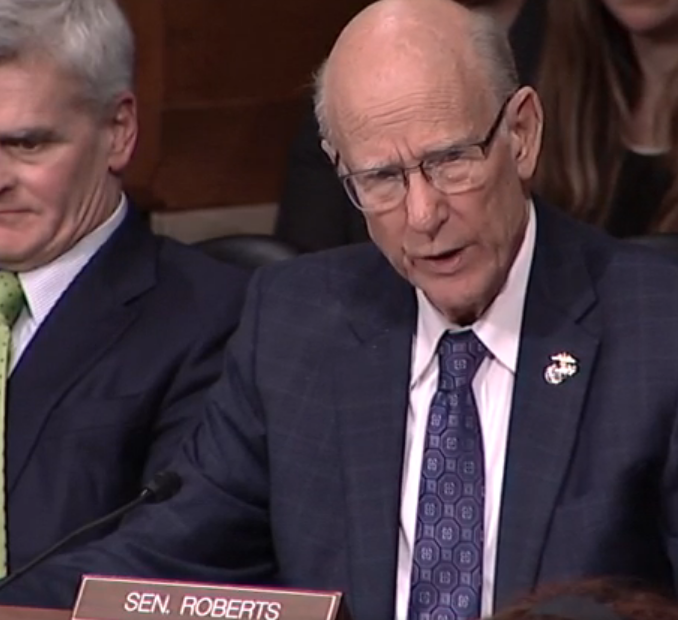
WASHINGTON, D.C. – U.S. Senator Pat Roberts (R-Kan.) Tuesday discussed the severity of the novel coronavirus during a Senate Health, Education, Labor and Pensions (HELP) Committee hearing titled, "An Emerging Disease Threat: How the U.S. Is Responding to COVID-19, the Novel Coronavirus."
Watch Senator Roberts' questioning, click here.
"During the HELP Committee hearing we gained crucial insight into what it means when the CDC states the novel coronavirus is spreading," said Sen. Roberts. "The terminology 'community spread' has caused panic to ensue across the country and it is critical we recognize the clarification made today that this term is meant to categorize the source of a case and not indicate a continued mass spread throughout communities in the United States. We need to take this situation seriously while avoiding overly alarmist rhetoric that does more harm than good."
The Senate HELP Committee's hearing was aimed at learning more about the outbreak of the novel coronavirus and the threat it presents to the country. Dr. Anne Schuchat, Dr. Anthony Fauci, Dr. Robert Kadlec and Dr. Stephen Hahn were the four witnesses brought before the full committee for questioning.
The Senator's remarks as prepared for delivery:
Thank you, Mr. Chairman.
I would like to thank all of the witnesses for being here today and for all of the work you're doing to protect the American people during this public health crisis.
This virus is a serious threat to our nation's public health and biosecurity and we should treat it as such – not as an opportunity to inject even more partisan politics than what we typically deal with around here. It is very unfortunate that this kind of emergency has become a topic of partisan debate.
I'm concerned about how this outbreak will affect rural areas. On average rural populations tend to be older and with more health conditions – in other words they tend to be more at-risk for adverse health outcomes from COVID-19.
In addition, these communities do not have the same resources as urban areas, including close access to health care services.
Dr. Schuchat and Dr. Kadlec, can you give me an update on preparedness and response efforts in rural areas specifically? How are you working with local-level partners in these areas?
How should patients, their families, and health care providers in rural areas prepare for the spread of this disease? Especially those in nursing homes and other long-term care facilities, after what we've seen happen in Washington in the last few days?
Dr. Schuchat, I would like you to clarify something for people who are seeing a lot of headlines and are concerned about the well-being of their families. There have been reports that CDC expects the virus to "spread throughout U.S. communities."
As I understand it, this is a way of referring to what is known as "community spread" – and I've heard from constituents who are confused by the terminology.
I recognize this is significant concern, but is it accurate that "community spread" has a specific definition and it does not necessarily mean that everyone in the community will contract the virus?
Is it correct that even when "community spread" occurs, that measures can still be taken to prevent additional infections?
It seems as though we're still in the beginning stages of dealing with this outbreak in the United States. I think we all have questions that there just aren't clear answers to at this moment.
Given that, Dr. Schuchat, what do you think is the most important thing for Americans to know as we face further spread of the virus in the coming weeks and months?
I heard from my state that the wait for CDC to confirm test results for a patient under investigation (P-U-I) took roughly five days – causing significant disruption in the community.
What is the current turnaround time for CDC to confirm diagnostic test results and communicate that to state and local partners, as well as patients and providers?






